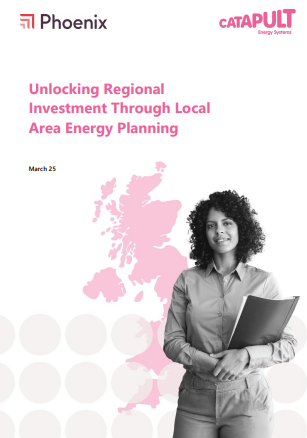This report sets out a four-stage framework to help local authorities move from strategy to investment.
Resource
This report sets out a four-stage framework to help local authorities move from strategy to investment.

Energy Systems Catapult and Phoenix Group have partnered to create a series of tools and resources designed to support local stakeholders in developing investable portfolios as an output from Local Area Energy Plans (LAEPs). By combining technical expertise in energy systems with a focus on long-term sustainability and financial viability, these tools aim to bridge the gap between policy ambition and practical implementation.
This report sets out a four-stage framework to help local authorities move from strategy to investment:
Designed to aid Local Authorities in developing robust, evidence-based plans to enable Net Zero.
Already have an account? Login